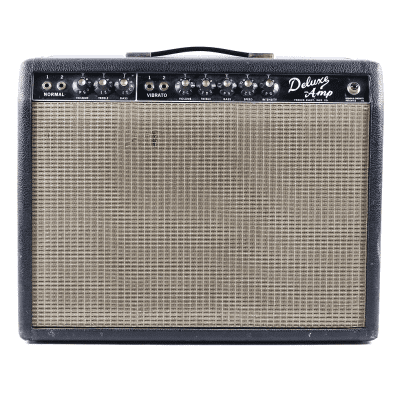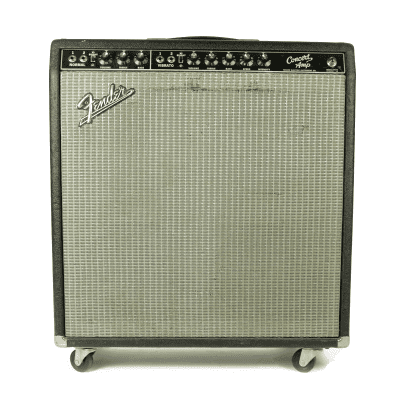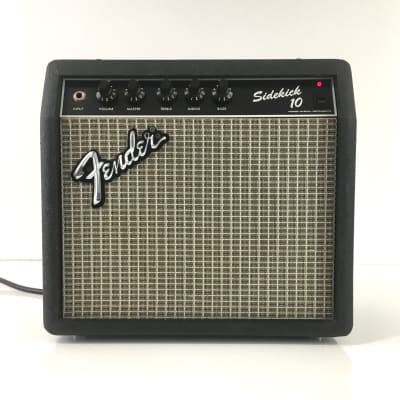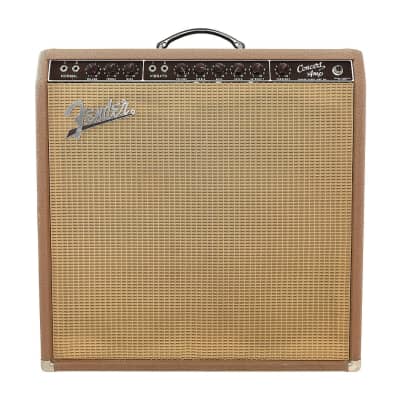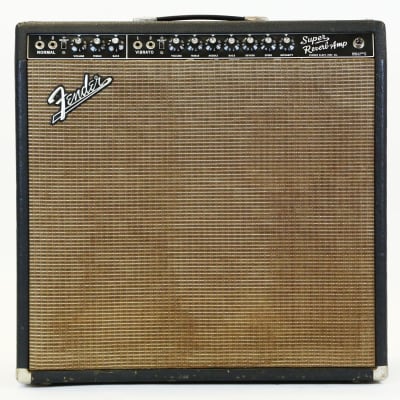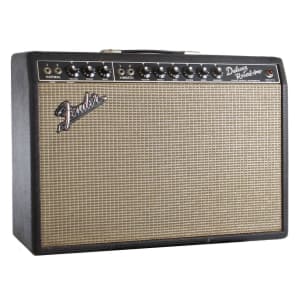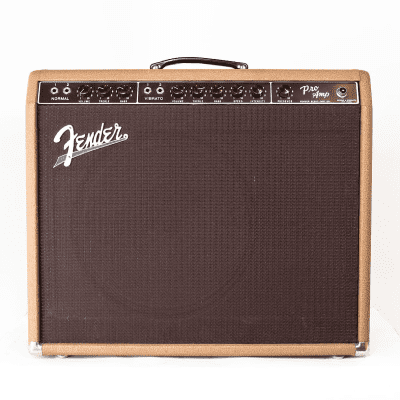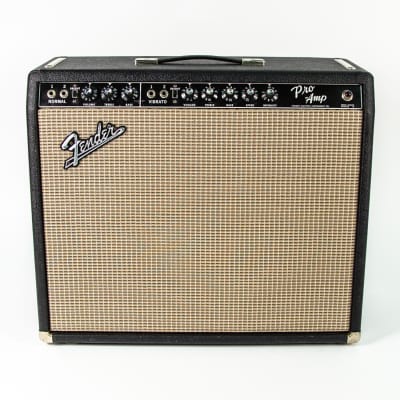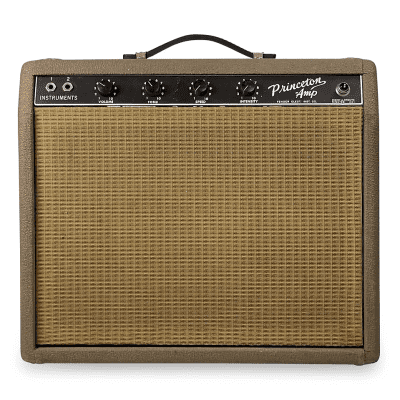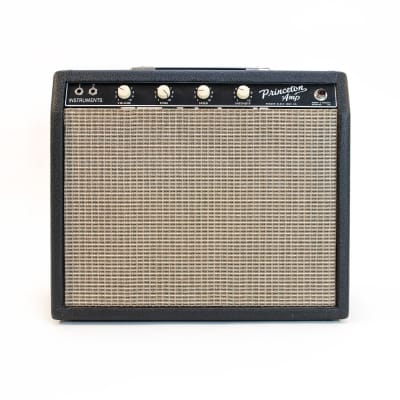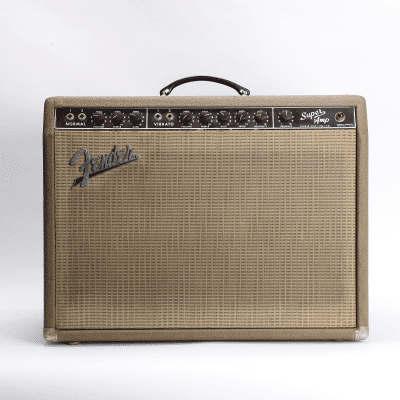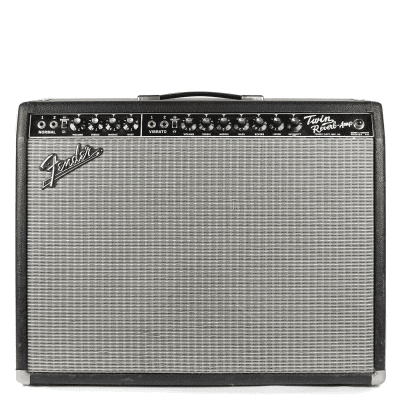Since Fender started making guitar amplifiers in the mid 1940s, Leo’s name has gone on to adorn some of the greatest and most widely used amps ever built. Different vintage Fender amps made at various points from 1945 onwards are often lumped together in different eras, usually based on their appearance. These are: TV Front, Wide Panel, Narrow Panel, Brown Panel, Blonde, Black Panel and Silver Panel.
The amps from these eras all have particular characteristics that are loved and loathed alike by different players around the world. Two such eras of vintage Fender amps that are subject to much debate are Black Panel (BP) and Silver Panel (SP) amps.
What Are Black & Silver Panel Fender Amps?
Black Panel Fender amps have a black panel, with skirted black knobs and silver tops, black tolex, and a silver/grey grille cloth. These were made between 1963 and 1967.
Silver Panel Fender amps were made straight after, between 1967 and 1983, and can be identified by their silver control panel. They’ve usually got a blue label denoting the model, and a silver and blue weave grille cloth.
One thing worth noting is that Fender didn’t waste much (there’s the classic anecdote of Leo reusing his Styrofoam coffee cup). If there were leftover parts from the previous model or series, they’d usually get used. As such, you do sometimes see models made with parts from previous versions—for example, the transitional "Tuxedo" BF Bassman amps, that utilized parts from the previous era of Brown Panel amps. It also meant that sometimes, even versions of the same amp from the same period could feature slightly different parts.
Throughout the Black and Silver Panel eras, a lot of the same models were in production. Amps like the Champ and Princeton can be seen dotted all over Fender’s history. You might think that if the amps are being sold under the same name, then surely they’re the same thing, but with a slightly different look? If that were the case, then you probably wouldn’t be reading this! While the names stayed the same, a lot of what was going on under the hood changed over years, resulting in amps that sounded fairly different—but are they as different as is made out?
Black & Silver Panel Fender Amp Differences
A lot of general statements about which is brighter, has more headroom, etc. are thrown about when discussing Black Panel vs Silver Panel Fender amps. And while there is some truth in a lot of those statements, it’s worth noting that many of those early SP amps were actually very similar, if not the same, as their BP counterparts (more on this under Drip Edge SP amps).
Some claim that Silver Panel amps sound harsh and shrill. While this might be true in a few select cases, it’s an incredibly generic statement to make about every amp made within around a 15-year period. As with the BP period, there were different circuit designs and various parts used that all resulted in slightly different tones. Now and again, this won’t be to everyone’s taste, but this certainly doesn’t mean that they’re bad amps.
Are BP Fender amps better than Silver Panels? Their listing prices often suggest that they are, but it’s not quite as simple as that. Generally, vintage BP Fender amps are renowned for their smooth breakup, musical compression, prominent mid-scoop, and incredible build quality.

The whole "glassy" Fender amp sound was born out of the BP era and many see it as Leo’s finest range of amplifiers. Rock players of the '60s and '70s that weren’t using Marshall or Orange were probably using cranked BP Fenders. There were different models produced, from low wattage Champs to high powered Twins, and they were made both pre and post-CBS takeover. New features like vibrato and reverb were also added to many models during this time.
Silver Panel amps, on the other hand, are praised for their clean headroom and are the go-to amps for some Nashville players. Having a bright amp with a load of clean headroom can make for a superb country amplifier. Some changes were made to many SP circuits in the '70s—a master volume was added to most amps 50W and over, which usually affects the tone somewhat. Many rock guitarists were turning to the likes of Marshall for their sound, so adding a master volume meant you could crank the preamp to get your amp to break up while keeping the volume in check. There was also a push-pull boost added to some designs that increased gain (most players don’t tend to use these much).

There were some amps, however, that didn’t change much throughout the Silver Panel era—like the Princeton (just ignore the push-pull) and the Champ—and won’t sound wildly different to their Black Panel counterparts. Using the master volume for increasing gain doesn’t always lead to great results. There’s not that much gain on tap with most SP Fenders, but it does allow you to use boost pedals in a slightly different and more manageable way. Loads of players have also been able to find the sweet spot on their SP amps by balancing the volume knobs against each other.
There were more tweaks made to many Silver Panel amps throughout the late '60s and '70s, many of them fairly technical. Different parts were also used, and the quality of these builds is often questioned, particularly throughout the mid-late '70s. One such tweak was switching from a bias pot to a bias balance pot to make up for the use of poorer quality tubes. Ultra-linear output transformers were added, and voltages were also changed to help increase headroom. This did have some negative side effects, such as feedback loops and oscillation. Steps were taken to rectify this, but by adding more parts to the circuit, some claim that the Fender sparkle was lost.
It’s worth noting that transformers, rectifiers, and speakers were changed throughout many of Fender’s amps' lives, which can have a massive effect on the tone. The speaker is, after all, the voice of the entire amp, so using something of sub-par quality will no doubt lead some players to write off the whole amp. And because of the tweaks and changes to BP and SP amps over the years, clearly defining the differences between them isn't always so straightforward.
"Drip Edge" Silver Panel Amps
During the transition from Black Panel to Silver Panel, the circuits of most Fender amps actually stayed the same. Those early SP amps are known as Drip Edge models, due to the aluminum trim that ran around the edge of the grille cloth. Drip Edge SP amps were made between 1967 and 1969.
Whilst the insides of these amps are pretty much the same as their Black Panel counterparts and feature the famed AB763 circuitry, they do tend to go for less money, making them a great option if you’re after the BP sound on a budget.
Fender Princeton
The differences between BP and SP are actually fairly small. The BP circuit did change slightly after the CBS takeover but remained the same until around 1978, when the push-pull boost was added. Even with this, when the boost isn’t engaged, the difference in tone is negligible. Some might claim that SP Princetons aren’t quite as robust as BP, but there are a lot of SP models knocking around today that would contest that!
Throughout both periods, various speakers were fitted in the Princeton, including Jensens and Oxfords. Which speaker is better depends on what you want out of your amp. Some of the bad rap associated with SF amps is down to the speaker, which is a fairly easy mod to make.
Fender Twin
The Fender Twin is a big, loud, clean amp, regardless of whether you’re looking at a BP or SP. As a BP, the Twin Reverb was always an 85W amp until 1968 when it was increased to 100W. That is also when the bias control was introduced, as well as a number of changes to the output stage. This only lasted a year, and some players claim that the mid-’68 to late-’69 Twins compress really nicely.
A master volume was added in 1972, the push-pull volume boost and hum balance controls were added around 1976, and in 1977, the Twin’s power output was increased to 135W. It’s worth noting that the first SP Twins (from late-’67 to mid-’68) had the same circuitry as their previous BP versions.
Whilst there is certainly a difference between BP and most SP Twin Reverbs, don’t go comparing a Silver Twin, with its volume just under 1, and a Black Panel with its volume around 4 or 5—they will always sound more open when they’re cranked a little.
Both Silver Panel and Black Panel Fender Twins are more difficult to drive to breakup simply because of the amount of volume they pump out, though a BP will likely do so sooner. Also, despite its different circuitry, a master volume, push-pull-equipped Silver Panel Fender Twin will still have most of the desirable Twin characteristics: loud, clear, punchy, dynamic, and takes pedals incredibly well.
Fender Bassman
The Bassman started its life intended as a bass amp for use with the Precision Bass. However, it was soon discovered that it sounded great for guitar. Earlier Bassmans were in combo format but were later separated into a head and cab. This means that BP and SP examples are easy to pair with various speakers.
Generally, Bassman amps tend to be a little bassier and mellower than other Fender amps and have slightly more mids and gain when turned up.
Both the Black Panel and Silver Panel Fender Bassman amps have different circuits associated with them, so comparing the two eras isn’t simple. CBS made some tweaks to the original AA864 circuit, giving us the AA165 and AB165.
The AA165 is usually said to be closer to the original circuit, and the AB165 is favored by players that like a little more drive, due to its use of an additional gain stage on the Normal channel. It’s also interesting to note that a lot of original Bassmans (and in fact, old Fender amps in general) have tube charts that aren’t actually accurate.
Early Silver Panel models kept the AB165 circuit, but some changes were made later, like adding a master volume. There were also other circuits made in the SP era, as well as a powerful 100W version in the late-'60s.
Black Panel Modding
Modding SP amps to BP specs is a way of getting the famed Black Panel sound without spending quite as much money. There are various kits you can buy that provide you with parts and tell you how to remove, relocate, and replace various parts of your SP to bring it to BP specs.
Some of these can wield some great results with certain amps, but it’s worth remembering how much of a part the transformers, rectifiers, and speakers play in the tone that you get out of your amp. Now, we’ll look at a few examples of vintage Fender amps and see what changed in the Black and Silver Panel eras.
